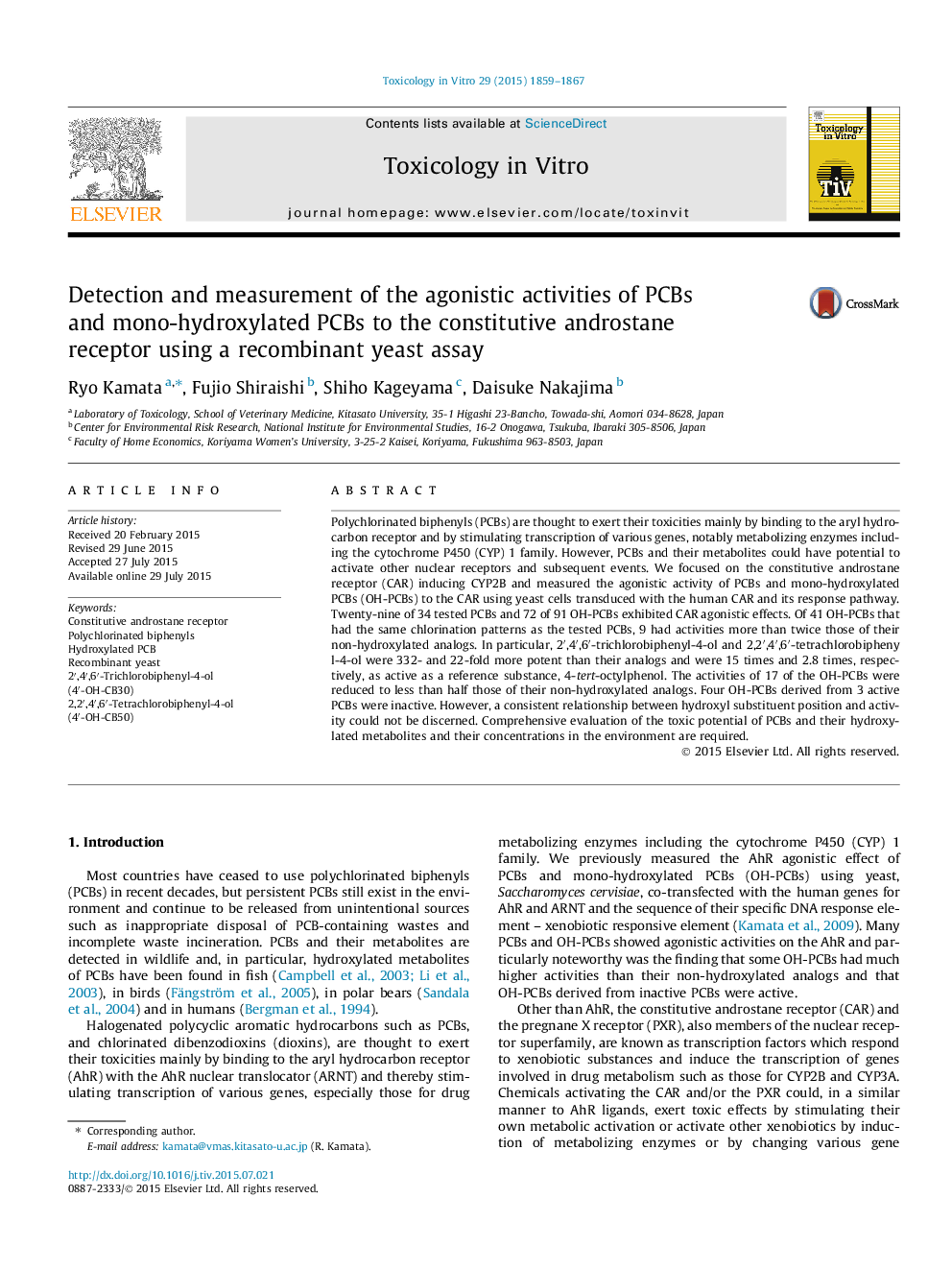| Article ID | Journal | Published Year | Pages | File Type |
|---|---|---|---|---|
| 5861427 | Toxicology in Vitro | 2015 | 9 Pages |
â¢PCBs and OH-PCBs were tested for their ability to activate the CAR.â¢Most of the tested PCBs and OH-PCBs activated CAR-mediated transcription.â¢The CAR activities of the PCBs were greatly changed by presence of a hydroxyl group.â¢Several OH-PCBs were much more potent than their non-hydroxylated analogs.
Polychlorinated biphenyls (PCBs) are thought to exert their toxicities mainly by binding to the aryl hydrocarbon receptor and by stimulating transcription of various genes, notably metabolizing enzymes including the cytochrome P450 (CYP) 1 family. However, PCBs and their metabolites could have potential to activate other nuclear receptors and subsequent events. We focused on the constitutive androstane receptor (CAR) inducing CYP2B and measured the agonistic activity of PCBs and mono-hydroxylated PCBs (OH-PCBs) to the CAR using yeast cells transduced with the human CAR and its response pathway. Twenty-nine of 34 tested PCBs and 72 of 91 OH-PCBs exhibited CAR agonistic effects. Of 41 OH-PCBs that had the same chlorination patterns as the tested PCBs, 9 had activities more than twice those of their non-hydroxylated analogs. In particular, 2â²,4â²,6â²-trichlorobiphenyl-4-ol and 2,2â²,4â²,6â²-tetrachlorobiphenyl-4-ol were 332- and 22-fold more potent than their analogs and were 15 times and 2.8 times, respectively, as active as a reference substance, 4-tert-octylphenol. The activities of 17 of the OH-PCBs were reduced to less than half those of their non-hydroxylated analogs. Four OH-PCBs derived from 3 active PCBs were inactive. However, a consistent relationship between hydroxyl substituent position and activity could not be discerned. Comprehensive evaluation of the toxic potential of PCBs and their hydroxylated metabolites and their concentrations in the environment are required.
